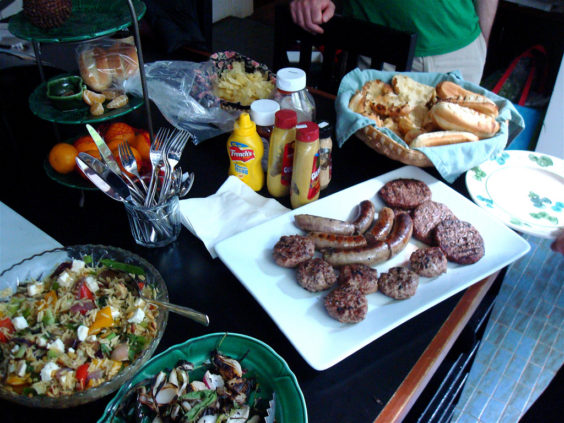
In honor of today’s 237th birthday of our nation, officials in the Cradle of Liberty are celebrating with concerts, fireworks – and by comparison pricing your groceries for you.
Who needs the Walmart Challenge, when the government is hard at work determining which supermarket has the best prices for your Fourth of July picnic items?
In a survey designed to help taxpayers save money – but which, no doubt, cost taxpayer dollars to conduct – regulators in Massachusetts visited 18 Boston-area grocery stores “with a list of ten popular barbecue items, including hamburger meat, hot dogs, buns, coleslaw, ketchup, and pickles,” a news release from the Office of Consumer Affairs and Business Regulation announces. The surveyors then proceeded to purchase each item at various Market Basket, Stop & Shop, Hannaford, Big Y, Shaw’s and Price Chopper locations.
With an average total of $31.57, Hannaford won, though on a technicality. Market Basket’s total of $28.70 was cheaper, but the chain was excluded from the final results because only two store locations were visited, “thus not enabling a true comparison of Market Basket’s average prices,” the news release explained. At $39.75, Shaw’s was the most expensive.
Nice to know. But do we really need government regulators going grocery shopping on the job, to let citizens know who has the best price on pickles?
The stated purpose of the price checking was actually to ensure that store scanners were accurate, and that the prices charged matched the prices on the shelves. Bay State residents are still getting used to a newfangled system in which individual grocery items no longer have to be labeled with individual price stickers. Massachusetts was the last state to get rid of the archaic requirement at the beginning of this year (read: “Mass Confusion in Massachusetts? Grocery Price Tags Disappear Overnight”).
But some shoppers were suspicious that it was all a ploy to overcharge, or just confuse, them. “With no price tags, you may not know what the price is until you get to the register,” one shopper complained to the Worcester Telegram & Gazette in January. In order to instill confidence in customers, and ensure a commitment to accuracy among retailers, the new state law requires stores to pay up if an item’s scanned price at the register is more than the one marked on the shelf. Customers get the overcharged item for free, up to a value of $10. And the store can be fined up to $5,000.
Amazingly (and to some, incredulously), the state’s price survey “showed 100 percent price accuracy between shelf and scanner prices.”
“Consumers planning their Fourth of July barbecues can eat easy,” said Consumer Affairs official Barbara Anthony. “Consumers should feel empowered to shop around at different chains for the best deals, knowing that the price they see on the shelves is what they’ll be charged at the register.”
But really – 100 percent price accuracy? “Suspiciously remarkable,” writes Paul McNamara, the Massachusetts-based online news editor of the tech site NetworkWorld. “I’d be eating a bit easier this weekend if the state had found a mistake or two.”
Shaw’s may have its own objection to the price check survey, which was conducted before the chain got rid of its loyalty program and lowered prices on thousands of items (read: “Shaw’s and Acme Ditch Loyalty Programs, Digital Coupons”). If the survey were conducted today, chances are Shaw’s might not be the highest-priced store on the list. Plus, who does all their Fourth of July grocery shopping in mid-June? Many of the items on the surveyors’ shopping lists were probably on sale sometime after the survey was conducted.
So the price comparison wasn’t perfect. But Massachusetts officials suggest there will be more to come – on the taxpayers’ dime, of course.
Maybe next time they’ll do coupon matchups.
Image source: nesson-marshall/Flickr.com











I am sick of reading about our astronomical government debt, while constantly being told they can’t possibly cut any spending. Meanwhile, I read article after article about ridiculous ways the government is spending our tax dollars. It seems like they dream up new ways to blow money on a daily basis, while at the same time, I am struggling to figure out how I’m going to pay for the necessities. This is happening in all levels of government. There is a real disconnect between how our government is run and the reality of its citizens’ daily lives.
The most interesting thing about the price survey was that Market Basket did not have uniform pricing. The chain and its supporters swear up and down that they do not do zone pricing, but there’s the evidence in black and white – and the differences were far from insignificant.